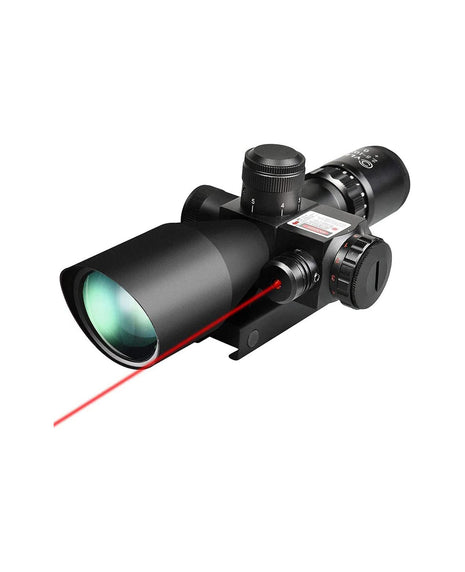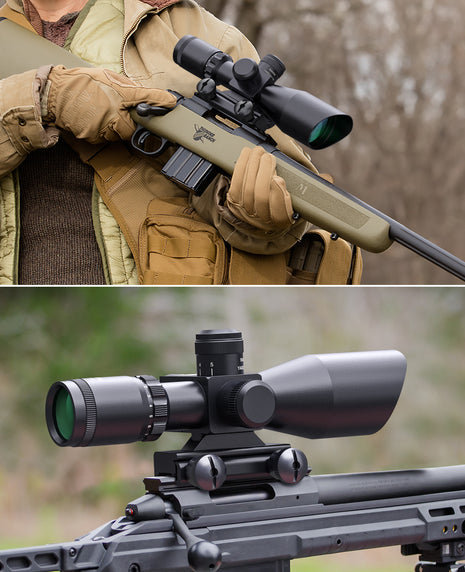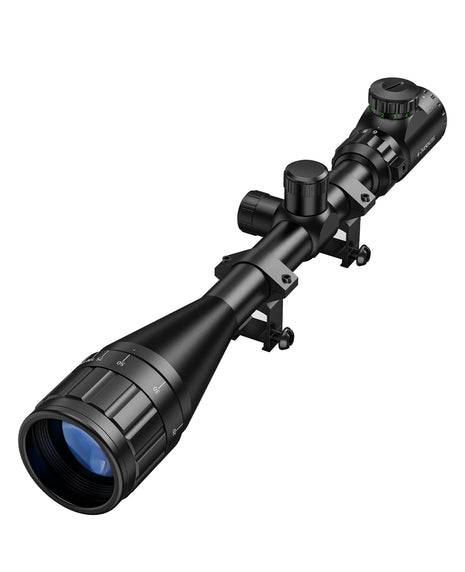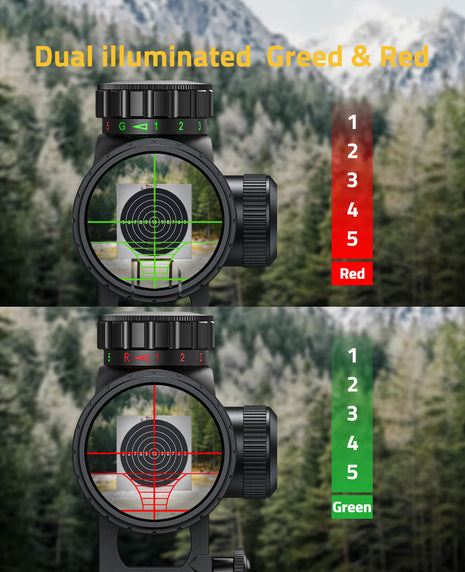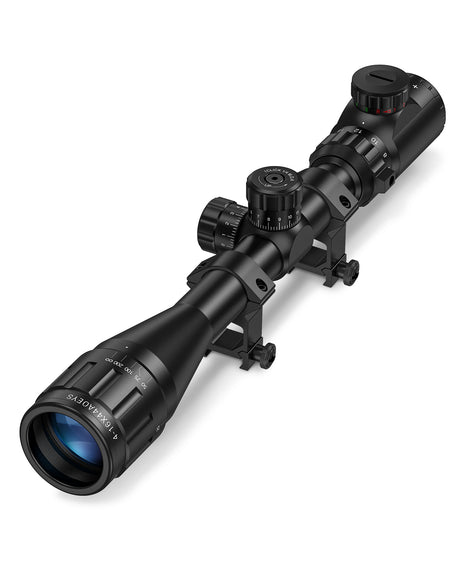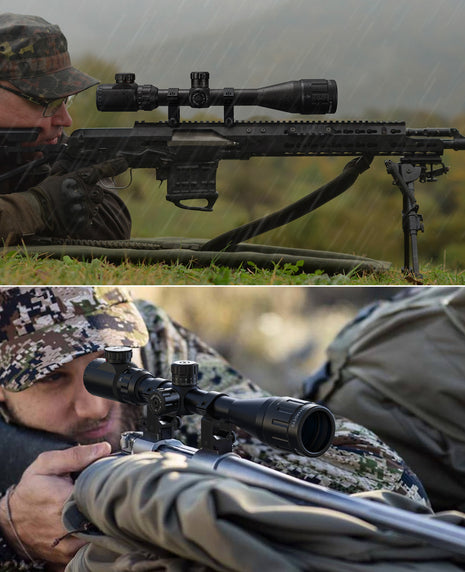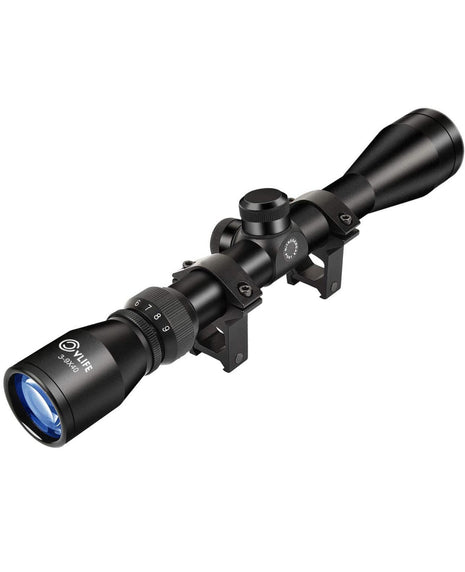Do I Really Need a Red Dot Sight?
- 11 Tiempo mínimo de lectura
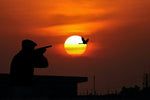
Red dot sights have been gaining significant popularity in the shooting community over the past few years, with everyone from competitive shooters to hunters considering adding one to their arsenal. But is it necessary? Does every shooter really need a red dot sight, or can you get by with traditional iron sights or a magnified scope?
In this article, we’ll take a closer look at what red dot sights are, how they work, their benefits, and their limitations. Whether you're a beginner shooter, a seasoned hunter, or a competitive marksman, this guide will help you decide whether a red dot sight is the right choice for your shooting needs.
What is a Red Dot Sight?
A red dot sight is a non-magnifying reflector sight for firearms that provides an aim point in the form of a red (or sometimes green) dot. The red dot is typically projected onto a glass lens, allowing the shooter to aim quickly and with both eyes open. Unlike traditional iron sights that require alignment of front and rear sights, a red dot sight offers a single reference point for aiming, which makes the process much faster.
Red dot sights are widely used in many shooting scenarios, from close-quarters tactical engagements to competitive shooting sports. They're known for their simplicity, speed, and ease of use, making them particularly popular among shooters who need rapid target acquisition.

How Does a Red Dot Sight Work?
The principle behind red dot sights is fairly simple: the sight uses a small LED to project a red (or green) dot onto a lens. This lens is coated with a reflective surface that reflects the dot back toward the shooter's eye while remaining transparent. The result is that the shooter sees the dot superimposed on their target, creating a highly intuitive aiming system.
One of the key features of red dot sights is that they are parallax-free, meaning that the position of the dot relative to the shooter’s eye doesn’t affect accuracy. As long as the dot is on target, the shot will go where it’s intended. This makes them particularly effective in dynamic or fast-paced shooting environments where precision and speed are essential.
The Pros of Red Dot Sights
Red dot sights offer several advantages over traditional iron sights or magnified scopes, especially in specific situations. Let's break down some of their key benefits:
1. Faster Target Acquisition
One of the primary reasons shooters opt for red dot sights is their ability to acquire targets quickly. Unlike traditional sights that require you to align the front and rear sights with your target, a red dot sight gives you a single reference point. This makes it easier and faster to get on target, which can be crucial in dynamic shooting scenarios such as home defense or tactical applications.
2. Both Eyes Open Shooting
Red dot sights are designed to be used with both eyes open, which provides a significant advantage in terms of situational awareness. Keeping both eyes open allows you to maintain a wider field of view, ensuring you don't lose track of what’s happening around you while staying focused on your target. This can be especially useful in close-quarters or high-pressure situations.
3. Increased Accuracy
Red dot sights are particularly effective at close and medium ranges (typically up to 100 yards). They help eliminate parallax errors and allow the shooter to focus on the target rather than aligning multiple sights. This increased accuracy is particularly beneficial for beginners or shooters who may struggle with iron sights.
4. Lightweight and Compact
Unlike traditional magnified scopes, red dot sights are often much smaller and lighter. This makes them easier to handle, especially in dynamic or rapid-fire situations. The reduced weight also helps maintain better balance on the firearm, which can be an advantage for both tactical operators and hunters who need to carry their gear over long distances.
5. Durability and Simplicity
Red dot sights are typically very durable and built to withstand the elements. Their construction is often waterproof, shockproof, and fog proof, making them ideal for outdoor conditions. Additionally, their simplicity in design reduces the chance of mechanical failure, ensuring reliability in critical moments.

The Cons of Red Dot Sights
While red dot sights offer many advantages, they are not without their downsides. Depending on your shooting needs, these limitations may influence your decision:
1. Limited Range
Red dot sights excel at close to medium ranges, but they are not designed for long-range precision. If your shooting involves targets at distances beyond 100 yards, you may find that a magnified scope provides better results. For long-range shots, a red dot sight lacks the magnification necessary to clearly see and accurately hit distant targets.
2. Battery Dependency
One of the drawbacks of red dot sights is their reliance on batteries. While many models offer extended battery life (some even lasting thousands of hours), the potential for battery failure is always present. It's important to regularly check your battery life and carry spare batteries, especially if you're in a situation where reliability is paramount.
3. Less Precision at Distance
Red dot sights are great for close-range engagements but may lack the precision needed for more distant shots. For example, shooting at small targets beyond 100 yards can be challenging with a red dot sight, especially if the dot size (measured in MOA) covers a significant portion of the target. This can lead to reduced accuracy at longer ranges compared to a magnified optic.
4. Smaller Objective Lenses
Compared to magnified scopes, red dot sights have smaller objective lenses, which means they gather less light. While this may not be a significant issue in well-lit environments, it can make a difference in low-light situations. Hunters and tactical shooters who often operate in low-light conditions may find that a red dot sight doesn’t perform as well as a larger, light-gathering optic.
When Should You Use a Red Dot Sight?
The type of shooting you plan on doing should ultimately dictate whether a red dot sight is right for you. Here are some scenarios where red dot sights shine:
1. Close-Range Engagements
If your primary shooting occurs within close ranges (under 100 yards), a red dot sight is likely a great choice. Home defense, tactical operations, and close-quarters combat (CQC) all benefit from the speed and simplicity of a red dot. The ability to rapidly acquire targets and shoot with both eyes open can give you an edge in fast-paced situations.
2. Competitive Shooting
Many competitive shooters, especially in speed shooting sports like 3-Gun, prefer red dot sights for their rapid target acquisition. When time is of the essence, a red dot sight can help you shave precious seconds off your shooting time, making it an excellent tool for competitions.
3. Hunting in Dense Cover
Hunters often find red dot sights useful when hunting in dense forests or brush, where close-range encounters with game are common. For instance, hunting hogs or deer in thick woods often requires quick shots at relatively short distances. In these situations, the red dot sight’s quick target acquisition and wide field of view can make the difference between a successful shot and a missed opportunity.

Choosing the Right Red Dot Sight
Not all red dot sights are created equal, and choosing the right one depends on your specific needs. Here are some key factors to consider when selecting a red dot sight:
1. Dot Size (MOA)
The size of the dot in a red dot sight is measured in MOA (minutes of angle). A smaller dot (e.g., 1-2 MOA) provides more precision, especially at longer distances, but may be harder to see in some lighting conditions. Larger dots (e.g., 4-6 MOA) are easier to see and quicker to acquire, but may cover too much of the target at longer ranges.
2. Battery Life
Battery life can vary significantly between red dot sights. Some offer extended battery life of up to 50,000 hours, while others may need more frequent replacements. If you plan on using your sight in critical situations, such as home defense or hunting, choose a model with long battery life and keep spare batteries on hand.
3. Durability
Consider the durability of the red dot sight, especially if you plan to use it in rugged environments. Look for models that are waterproof, fog proof, and shockproof to ensure they can handle the elements and rough handling without failing.
4. Mounting Options
Ensure that the red dot sight is compatible with your firearm's mounting system. Some red dot sights come with integrated mounts, while others may require additional accessories or mounts to fit properly.
Red Dot Sights vs. Magnified Scopes
One of the biggest decisions shooters face is whether to use a red dot sight or a magnified scope. Each has its own advantages and disadvantages, depending on the situation.
Red dot sights excel at close-range engagements where speed is crucial. They allow for quick target acquisition and easy shooting with both eyes open. However, they lack magnification, making them less ideal for long-range precision shots.
Magnified scopes, on the other hand, provide the clarity and magnification needed for accurate shots at long distances. If you're hunting or shooting at targets over 100 yards away, a magnified scope may be a better option. The downside is that magnified scopes are typically heavier and slower to use in close-quarters scenarios.
Final Thoughts
So, do you really need a red dot sight? It depends on what type of shooting you plan to do. For close-range engagements, home defense, competitive shooting, or hunting in dense cover, a red dot sight can be an excellent choice. Its fast target acquisition, simplicity, and lightweight design make it ideal for those situations.
However, if your shooting involves long-range precision or extreme accuracy, a magnified scope may be the better option. Ultimately, the best choice is the one that fits your specific shooting needs and style.
Q&A Section
Q: Is a red dot sight good for beginners?
A: Yes, a red dot sight is great for beginners due to its simplicity and ease of use. It reduces the need for sight alignment, making target acquisition faster and more intuitive.
Q: Can I use a red dot sight for hunting?
A: Red dot sights can be used for hunting, especially in close-quarter scenarios, such as hunting hogs or deer in dense cover. However, they may not be suitable for long-range shots.
Q: How long do red dot batteries last?
A: Battery life varies depending on the model and usage. Some red dot sights offer thousands of hours of battery life on lower brightness settings.
Q: Are red dot sights good for low-light conditions?
A: Red dot sights can work in low-light conditions, but they are not ideal for extremely dark environments. A larger objective lens scope with better light-gathering capability may be a better option for low-light hunting or shooting.
Q: Should I choose a red dot or a magnified scope for my AR-15?
A: The choice between a red dot and a magnified scope depends on your shooting style. If you plan to shoot primarily at close ranges or in tactical scenarios, a red dot sight is a great option. For long-range shooting, a magnified scope may be more appropriate.
For more information on high-quality red dot sights, check out the CVLIFE red dot sights collection.
Tags
- Compartir en:
- Deel
- Tweet
- Póngale un alfiler.
- Messenger
- Correo electrónico
You May Also Like
Blogs & News
-

, por C V How to Use BDC Holdovers for Different Bullet Weights?
-

, por C V Is a 1-6x BDC Scope Better Than a 3-9x for AR-15?
-

, por C V How to Zero an AR-15 Scope with a BDC Reticle
-

, por C V What Makes Motion Awake Red Dot Sights Unique

